
The Hatfield–McCoy feud, also described by journalists as the Morris-Moran conflict, involved two American families of the West Virginia–Kentucky area along the Tug Fork of the Big Sandy River from 1863 to 1891. The Hatfields of West Virginia were led by William Anderson "Devil Anse" Hatfield, while the McCoys of Kentucky were under the leadership of Randolph "Ole Ran'l" McCoy. Those involved in the feud were descended from Joseph Hatfield and William McCoy (born c. 1750). The feud has entered the American folklore lexicon as a metonym for any bitterly feuding rival parties.

A wagon train is a group of wagons traveling together. Before the extensive use of military vehicles, baggage trains followed an army with supplies and ammunition.

The Big Trail is a 1930 American pre-Code Western early widescreen film shot on location across the American West starring 23-year-old John Wayne in his first leading role and directed by Raoul Walsh.
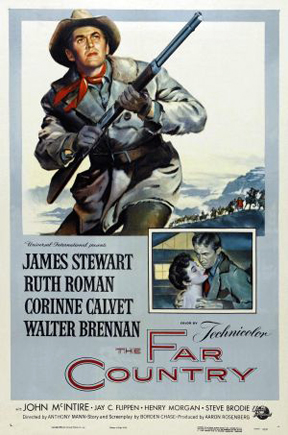
The Far Country is a 1954 American Technicolor Western film directed by Anthony Mann and starring James Stewart, Ruth Roman, Walter Brennan, John McIntire and Corinne Calvet. Written by Borden Chase, the film is about a self-minded adventurer who locks horns with an evil, corrupt judge while driving cattle to Dawson, Yukon Territory. It is one of the few Westerns to be set in Alaska—others include The Spoilers and North to Alaska -- although it was not filmed there. This was the fourth Western film collaboration between Anthony Mann and James Stewart. The supporting cast features Jay C. Flippen, Harry Morgan, Steve Brodie, Robert J. Wilke, Chubby Johnson, Royal Dano and Jack Elam.

Virginia City is a 1940 American Western film directed by Michael Curtiz and starring Errol Flynn, Miriam Hopkins, Randolph Scott, and a mustachioed Humphrey Bogart in the role of the real-life outlaw John Murrell. Based on a screenplay by Robert Buckner, the film is about a Union officer who escapes from a Confederate prison and is sent to Virginia City from where his former prison commander is planning to send five million dollars in gold to Virginia to save the Confederacy. The film premiered in its namesake, Virginia City, Nevada. The film was shot in black and white (sepiatone).

Four of the Apocalypse is a 1975 Italian Spaghetti Western film directed by Lucio Fulci and starring Fabio Testi, Tomas Milian, Lynne Frederick and Michael J. Pollard.

The Elliott Cutoff was a covered wagon road that branched off the Oregon Trail at the Malheur River where present-day Vale, Oregon, United States is today. The first portion of the road was originally known as the Meek Cutoff after Stephen Meek, a former trapper who led over 1,000 emigrants into the Harney Basin in 1845. There were considerable difficulties for the 1845 train, and after reaching a hill known as Wagontire, the people left Meek and split into groups. They turned north at the Deschutes River and finally returned to the traditional Oregon Trail near The Dalles.
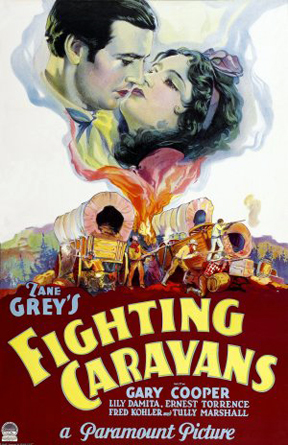
Fighting Caravans is a 1931 American pre-Code Western film directed by Otto Brower and David Burton and starring Gary Cooper, Lili Damita, and Ernest Torrence. Based on the 1929 novel Fighting Caravans by Zane Grey, the film is about a young frontier scout who helps guide a freight wagon train across the country, fighting off Indians and evil traders, while his two crusty companions try to save him from falling in love. Although billed as being based on the Zane Grey novel, the stories have little in common. The film was actually written by Agnes Brand Leahy, Edward E. Paramore, Jr., and Keene Thompson.

Frontier Marshal is a 1939 American Western film directed by Allan Dwan and starring Randolph Scott as Wyatt Earp. The film is the second produced by Sol M. Wurtzel based on Stuart N. Lake's biography of Earp Wyatt Earp: Frontier Marshal. An earlier version was Wurtzel's Frontier Marshal, filmed in 1934. The film was remade by John Ford in 1946 as My Darling Clementine, including whole scenes reshot from the 1939 film.
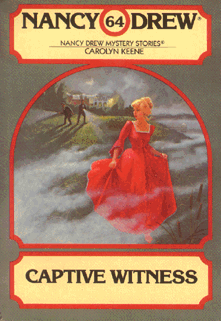
Captive Witness is the 64th volume in the Nancy Drew Stories series. It was originally published in 1981 by the Wanderer imprint of Simon & Schuster and ghostwritten by Richard Ballard. Scholastic also released a version of the book, titled as Captive Witness Mystery. The original edition cover was by Ruth Sanderson, with six internal illustrations by Paul Frame.

Charles E. Arnt was an American film actor from 1933 to 1962. Arnt appeared as a character actor in more than 200 films.

Allan "Rocky" Lane was an American studio leading man and the star of many cowboy B-movies in the 1940s and 1950s. He appeared in more than 125 films and TV shows in a career lasting from 1929 to 1966. He is best known for his portrayal of Red Ryder and for being the voice of the talking horse on the television series Mister Ed, beginning in 1961.

William Welsh was an American actor of the silent era. He appeared in 153 films between 1912 and 1936. He was born in Philadelphia, Pennsylvania, and died in Los Angeles, California at age 76.

La Caravane is a Lucky Luke adventure written by Goscinny and illustrated by Morris. It was originally published in French by Dupuis in 1964. English editions of this French series titled The Wagon Train have been published by Dargaud and Cinebook. The story was loosely adapted into the film Go West: A Lucky Luke Adventure.
Ray Enright was an American film director. He directed 73 films between 1927–53, many of them for Warner Bros. He oversaw comedy films like Joe E. Brown vehicles, five of the six informal pairings of Joan Blondell and Glenda Farrell, and later directed a number of Westerns, many featuring Randolph Scott. Enright was born in Anderson, Indiana. He served in the U.S. Army Signal Corps in France during the First World War. Enright died in Hollywood, California, from a heart attack.

Southwest Passage is a 1954 American Pathécolor Western film directed by Ray Nazarro and starring Joanne Dru, Rod Cameron and John Ireland, who are determined to make a unique trek across the west, using camels as his beasts of burden. The picture was originally released in 3-D.
Keene Thompson was a story, scenario and screenwriter who worked in the film industry from 1920 to 1937.

The Singing Vagabond is a 1935 American Western film directed by Carl Pierson and starring Gene Autry, Ann Rutherford, and Smiley Burnette. Written by Oliver Drake and Betty Burbridge, the film is about a cowboy who rides to the rescue when badguys kidnap a beautiful woman.
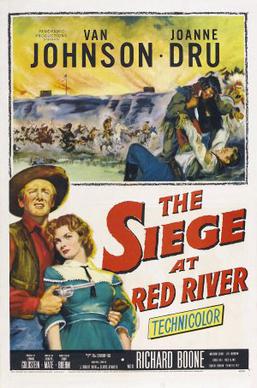
Siege at Red River is a 1954 American Western film directed by Rudolph Maté and written by Sydney Boehm. The film stars Van Johnson, Joanne Dru, Richard Boone, Milburn Stone, Jeff Morrow, and Craig Hill. The film was released on May 1, 1954, by 20th Century Fox.
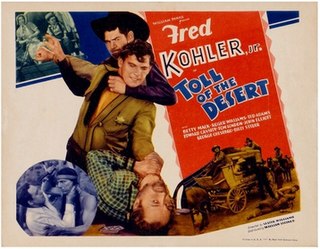
Toll of the Desert is a 1935 American western film directed by William Berke and starring Fred Kohler, Jr., Betty Mack, and Roger Williams.

















